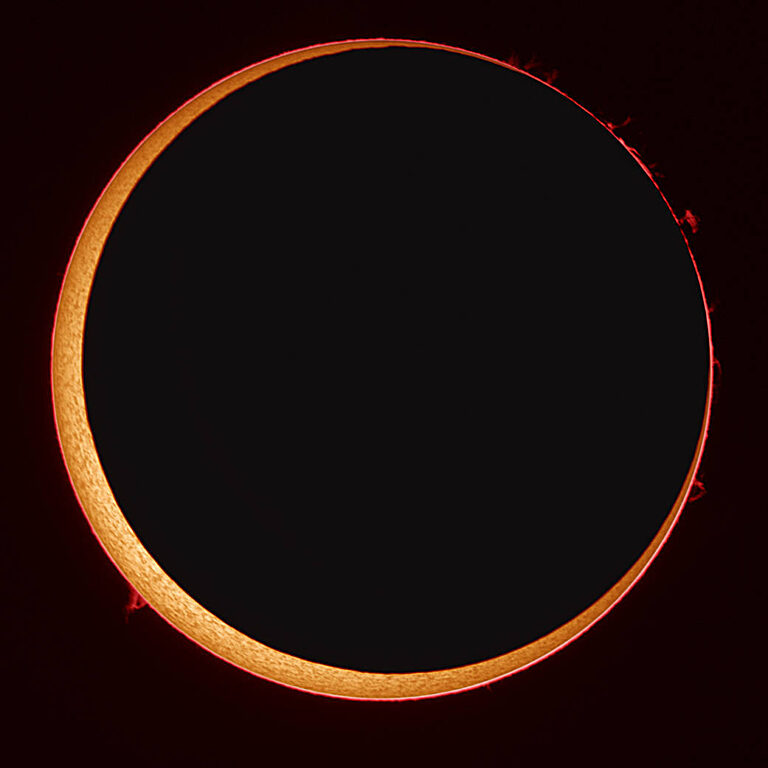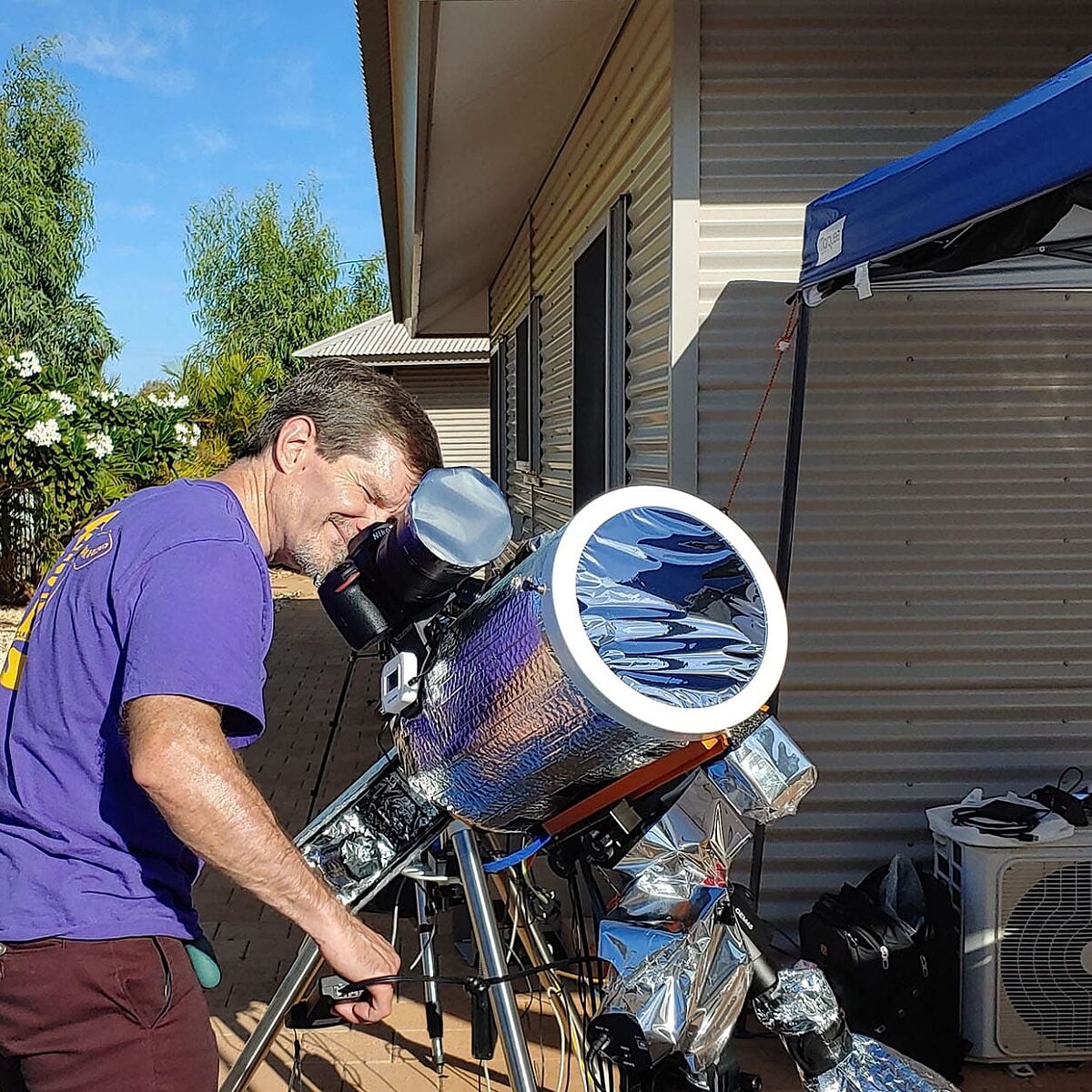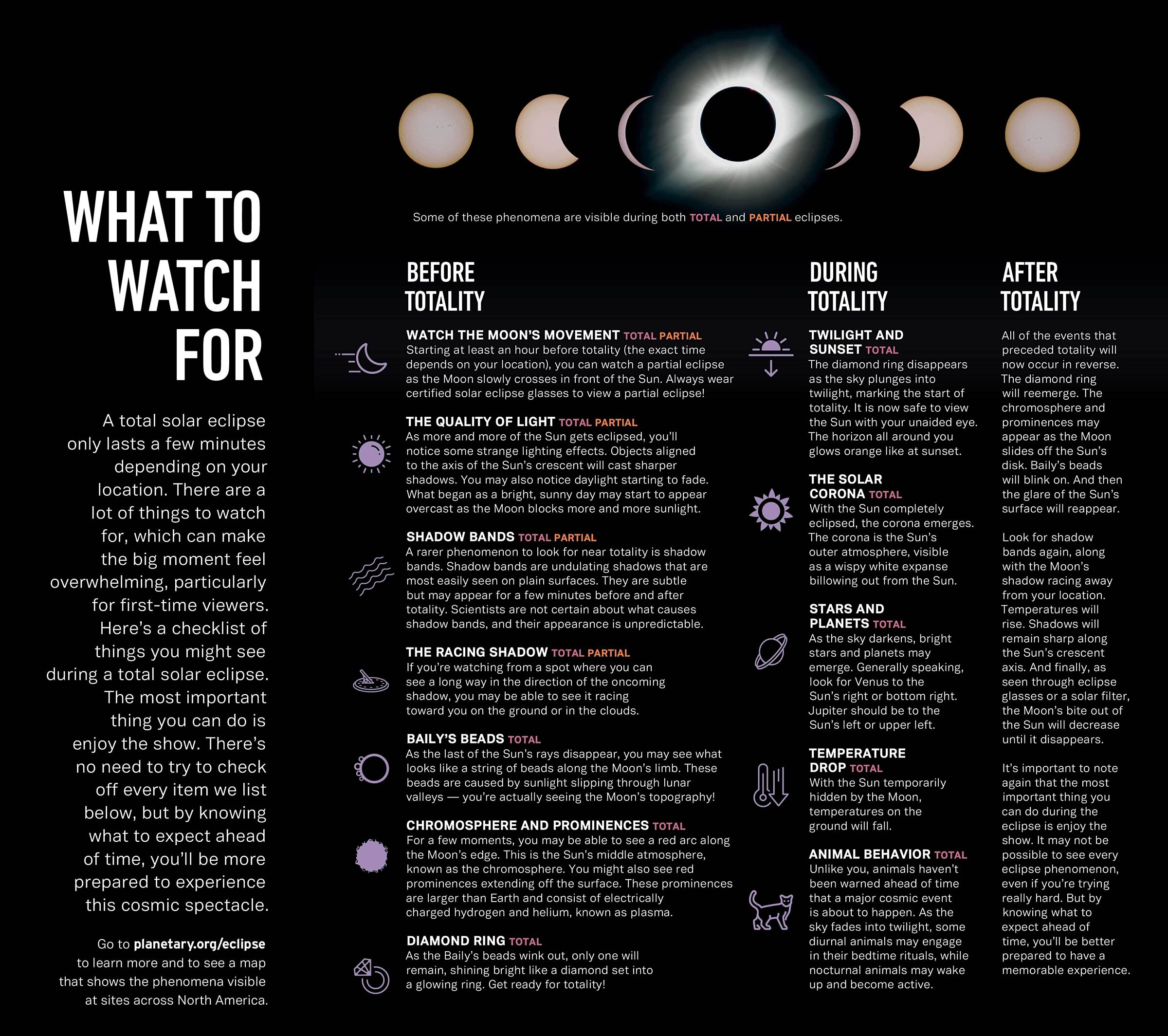
On the Cover: This image of Earth was captured by the NOAA/NASA DSCOVR satellite during a total solar eclipse on Aug. 21, 2017. The Moon’s dark shadow is centered on the United States. DSCOVR orbits the Sun–Earth L1 Lagrange point at a distance of about 1.5 million kilometers (1 million miles) from Earth.
Download PDF
Features
March Equinox 2024
An exquisite cosmic coincidence
Why eclipses on Earth are unlike anything else in the Solar System.
Seizing upon syzygy
How scientists use total solar eclipses as opportunities to do solar science.
Your impact: March equinox 2024
Announcing the first C. Wallace Hooser award for visionary philanthropy
Your place in space
Experiences in totality: We’re watching for the edge of daylight this year
By Bill Nye, Planetary Society CEO
My last total solar eclipse experience was at Homestead National Historical Park in Beatrice, Nebraska. The year 2017 wasn’t long ago, and I’ve been looking forward to my next eclipse ever since. Thousands of us waited for that moment, and sure enough, on that bright, sunny day, the sky went completely black. I imagine everyone or nearly everyone reading this has a story or has heard stories of a total solar eclipse experience. Well, my friends, it’s the real deal.
First is the experience itself. Birds sing night songs. Crickets chirp as though the Sun has set; you feel cool or even cold almost instantly. It is amazing. But second, leastways for me, is the realization that humans figured this all out. By all accounts, many cultures attributed the sudden darkness to the wish or whimsy of a god or gods. Indeed, eclipses are moving; they’re all that, as the kids say. But just why they occur and exactly when was only known in the last few hundred years.
I’ve been in a perfect place to experience totality a few times. I found each one to be more moving and extraordinary than the last. This must be because I experienced each event with a deeper understanding of celestial motion, which in turn led me to feel an intimate connection to the Sun and Moon. I guess that’s a great deal like a religious experience. I remember Carl Sagan remarking, “Religions would give their eyeteeth for predictions like this.” In other words, if you’re looking for something to believe in, science is it!
In Washington state in 1979, I was along the side of the path, so I experienced the partial effect. From where I was watching, the Sun dimmed but did not disappear. When I was in South Africa for a 2002 eclipse, it was quite cloudy up until the very last moment the Moon made its apparent move. It was already overcast. We wondered, “Will it be the same?” It sure was. The world went black. The insects were quite loud in the jungle, and there were a few moments when we wondered what nearby elephants might decide to do when their world went dark.
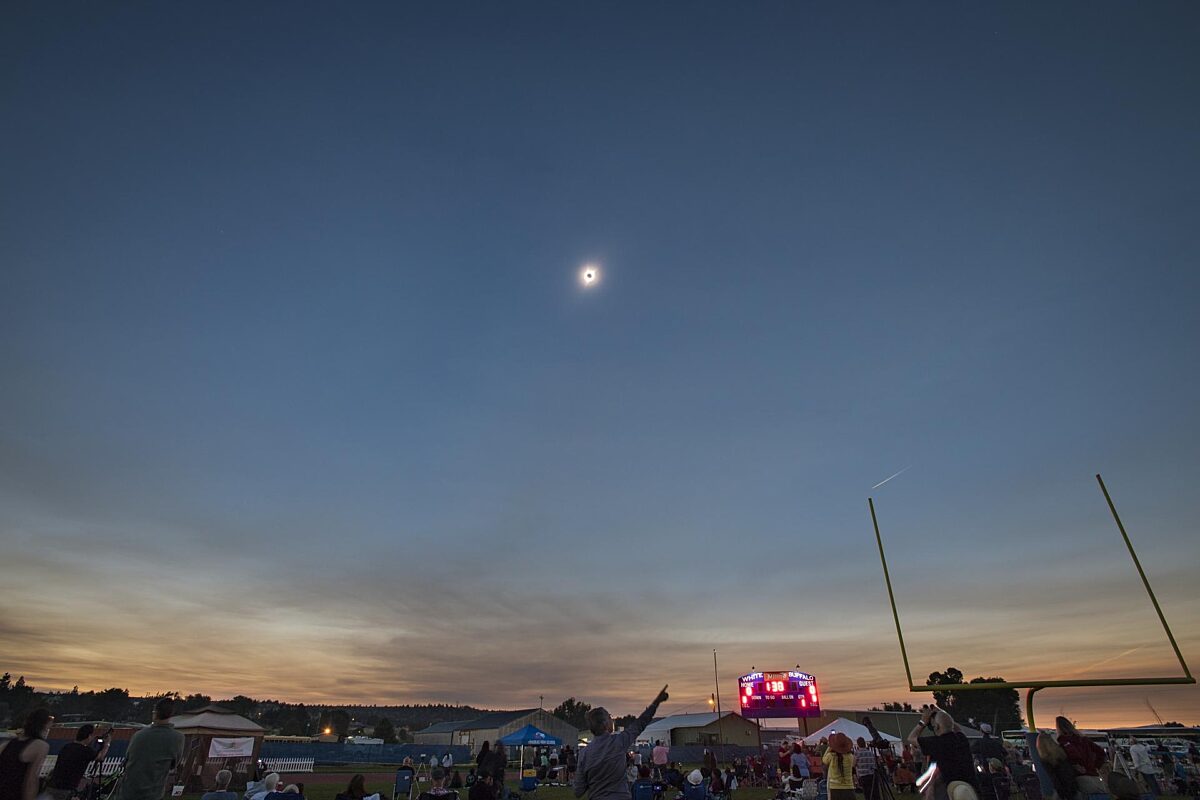
And last time, in Nebraska, I saw something I’d never much thought
about until there it was. The national park is on the prairie that
locals will proudly remind you is pretty flat. Nevertheless, we were on a
small hill, and way, way off in the distance as those minutes of
darkness were giving way, one could see the edge of daylight. We were in
the darkest part of the shadow, to be sure. But just a few kilometers
to the north, the Sun was shining bright as ever.
This April,
in Texas, we will see some things we’ve never seen before. I, for one,
will be astonished and filled with joy one more time along with a
thousand or so fellow Planetary Society members at our event, Eclipse-O-Rama 2024. We’ve picked a spot that is
very likely to be free from clouds that time of year. If you’re in North
America, I hope you catch the eclipse this year. I’m looking forward to
seeing a great many of you in the sunshine — and in the dark — in
Texas!
Members on deck
Witnessing a solar eclipse
We asked our members, “Have you ever witnessed a total solar eclipse? What was the experience like?” Here is a selection of their stories, some of which have been edited for length and clarity. For more, go to community.planetary.org.
"Our family saw the 2017 eclipse here in Salem, Oregon, which was the first U.S. landfall. We were right along the centerline, and my grandson used his drone to follow the shadow as it moved across the valley. To say it was stunning [is] an understatement. The Moon truly stole the show. The three-dimensionality of the sphere with reflected earthlight was life-changing. It’s why my wife and I booked Texas as soon as the Society opened up reservations. I can’t wait to see it again. I hope to see a lot of you there!" — Bob Woods
"I went down to Easley, South Carolina, to see the total solar eclipse in August 2017. It was a dream come true. I had wanted to see a total eclipse since I witnessed the partial eclipse in 1970 in Vermont. When the Moon took its first bite out of the Sun, I looked at my friends with an expression saying, 'It’s really happening!' The sky was clear, and it was a wondrous event. The excitement and joy of that day will stay with me forever." — Susan Alexander
"[The] first total solar eclipse I experienced was at Rexburg, Idaho, and
was the most profound experience of my life. Pictured [below] is one of the many images I was able to take of the eclipse." — David Pinsky

"On Aug. 11, 1999, in Penzance, Cornwall, up on the slopes of a grassy hill we waited as the time approached. It had been a really cloudy morning, and hopes of seeing anything spectacular were still gray. But then the weather changed abruptly. It was the weirdest thing. Surreal. The temperature dropped, the wind died down, seabirds were reacting, [and] there were breaks in the clouds just before it got really dark. And then ... we caught glimpses of the total eclipse ... once in a lifetime and last in a century ..." — Robert Johannessen
"I saw the 2017 total solar eclipse in Kansas City, Kansas. The clouds rolled in a half hour before totality, meaning I didn’t get to see the eclipse itself, yet the effects of the eclipse were fascinating. The nighttime bugs and birds began to chirp and sing, and the sky took on a green glow that felt like a tornado was near." — Sean Kane
"I lived my young life in Minnesota, so I had to take advantage of the February 1979 eclipse. A friend of mine and I took a road trip to Minot, North Dakota, where the path of totality grazed the very northwest corner of the state before passing into Canada. We were adventurous and on a shoestring budget. We drove to Minot, arriving the night before. We spent that night in the back of the station wagon that served as our accommodations. Like I said, it was February. That morning, I suppose it was like waking up in the morgue. The windows [were] entirely frosted over — on the inside. We drove far north toward Canada before totality to get as close to the centerline as possible. Well, we made it. Needless to say, the eclipse was awesome, seeing the Sun’s corona and the eerie green light all around the horizon over the frozen prairie. It was very surreal. I look forward to a warmer experience this time in Texas!" — Matt Lucking
"Solar eclipses give my wife and me reasons to travel to varied locations. We have seen three total solar eclipses and one annular eclipse. Each eclipse-viewing experience was different, but the total eclipses were [all] more dramatic than the annular eclipse. Viewing all of the eclipses was an awesome and emotional experience — the reason we keep going back for more. As totality approaches, you hear the growing sound of viewers’ hoots and hollers with a crescendo as totality arrives. The Sun’s crescent finally turns into a blazing diamond ring, and then, at the moment of totality, the diamond fades away to a glowing coronal ring around the Sun. The glow is modest at first, [and] then your eyes adjust to the darkened sky, and the intensity of the glow increases to a dazzling bright ring with a blacker-than-black hole in the middle. You feel the winds calm down and the temperature drop noticeably. Animal sounds change, birds stop chirping, and crickets start up. The eclipse appears as a gaping hole in the sky that draws in your gaze — it’s hard to look away. While viewing eclipses, we’ve met many people who share our love of eclipses. Since there is generally plenty of time before totality, you have the opportunity to get to know fellow eclipse viewers and share experiences with one another. I recall meeting a young woman in her late teens who was with her mom at the 2017 eclipse in Oregon. Although her mom didn’t seem to care much about eclipses, the young woman was heavily into astronomy and had been planning to see this eclipse for several years. She was quite knowledgeable about solar eclipses and had prepared herself for what to expect. When totality finally came, she was brought to tears and could no longer speak but just view the event. The eclipse impacted her in a way she did not expect — a state I could appreciate. [The image below] is from the 2017 solar eclipse in Culver, Oregon." — Steve Sheridan
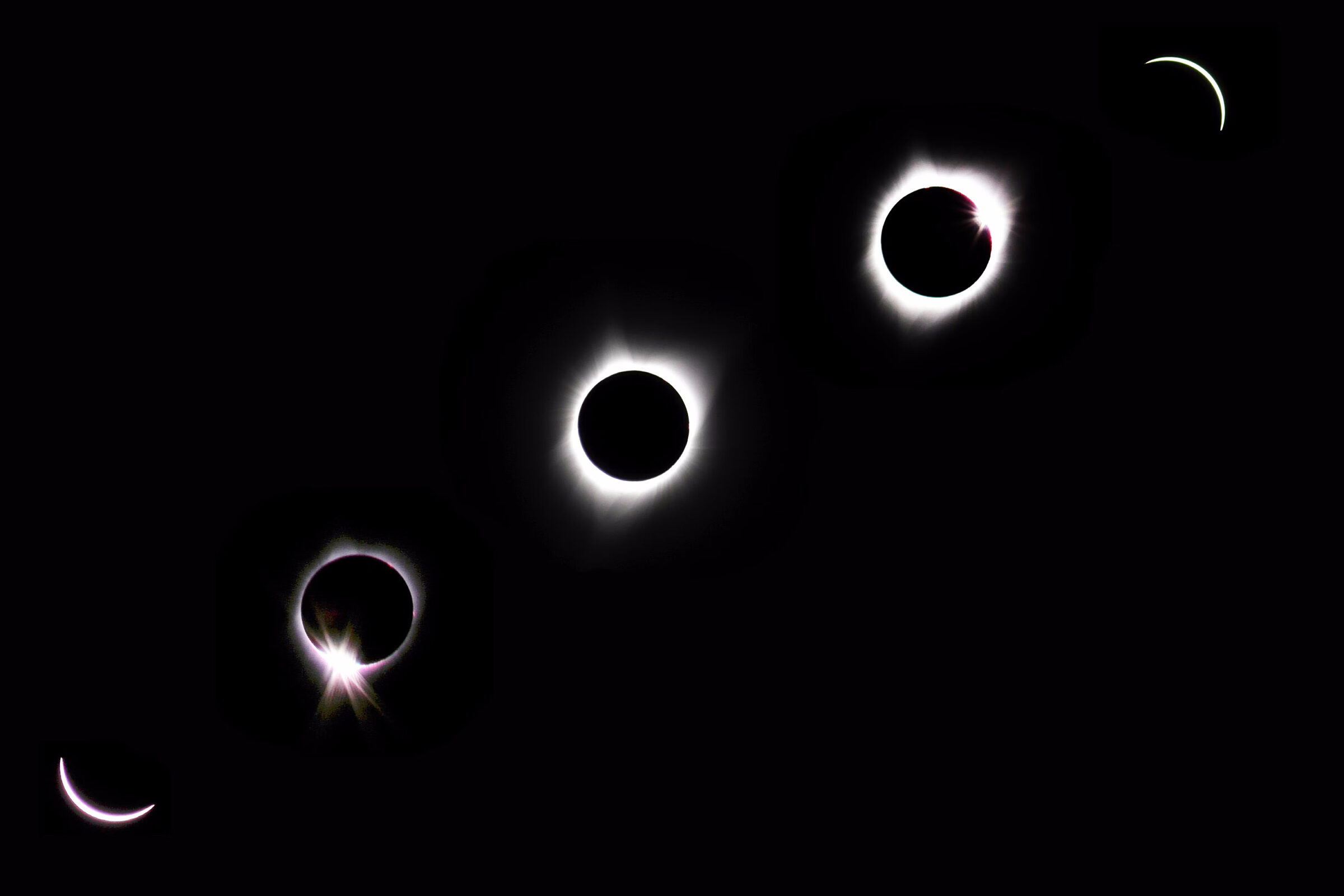
"Yes, in 2017 in Westmoreland, Tennessee. We had traveled there from Louisville, Kentucky, to experience totality. No picture, no video, [and] no written description can come close to capturing or describing the awe and beauty of such an event. Totality was an incredible experience! The wisps of the corona were amazing, the shadow bands rippling across the ground right before totality, the sudden fall of darkness, [and] the drop in temperature all happening within a few minutes is something that everyone should have on their bucket list. I will be in the shadow again wherever clear skies take me [in] April. There is no comparison between a partial and a total eclipse. Don’t let the high percentages of coverage at nearby locations fool you. You must see totality to experience perhaps the greatest naked-eye wonder in the sky!" — Robert Massey
"Here are a few haiku inspired by my experience in Missouri during the solar eclipse in 2017:
The eclipse begins
Light does not shine as it should
Dark is my vision
Luna blocks the light
Helios hides behind her
Terra becomes dark
A diamond ring
Then solar totality
Like nothing you’ve seen"
— Suzan Stocker
Get involved
Your picks for the best of 2023
The Planetary Society’s global community members did the seemingly impossible in November 2023 — they chose favorites from among all the amazing things that happened in space exploration last year! Here are some of the top results. You can see the rest at planetary.org/best-of-2023.
BEST SOLAR SYSTEM IMAGE
The Japanese ispace Hakuto-R spacecraft captured this image of a total solar eclipse from lunar orbit on April 20, 2023.

MOST EXCITING MOMENT IN PLANETARY SCIENCE
NASA’s OSIRIS-REx spacecraft successfully returned a sample of asteroid Bennu to Earth in September, completing a seven-year mission that spanned 7.1 billion kilometers (4.4 billion miles).
BEST “FACT WORTH SHARING” FROM OUR WEEKLY DOWNLINK NEWSLETTER
With trillions of galaxies in the Universe, each containing hundreds of billions of stars, most of which are likely to host planets and many of which host moons, the number of worlds out there is staggering — as is the likelihood that life exists beyond Earth.
BEST MARS IMAGE
Through the lens of NASA’s Curiosity Mars rover’s black-and-white navigation camera, the red planet robotic explorer captured breathtaking panoramas of the Marker Band Valley at two different times on April 8, 2023. The photos were subsequently merged and enhanced with color, infusing an artistic touch into the scene. The morning panorama was adorned with vibrant yellow hues while the afternoon panorama embraced soothing blues.
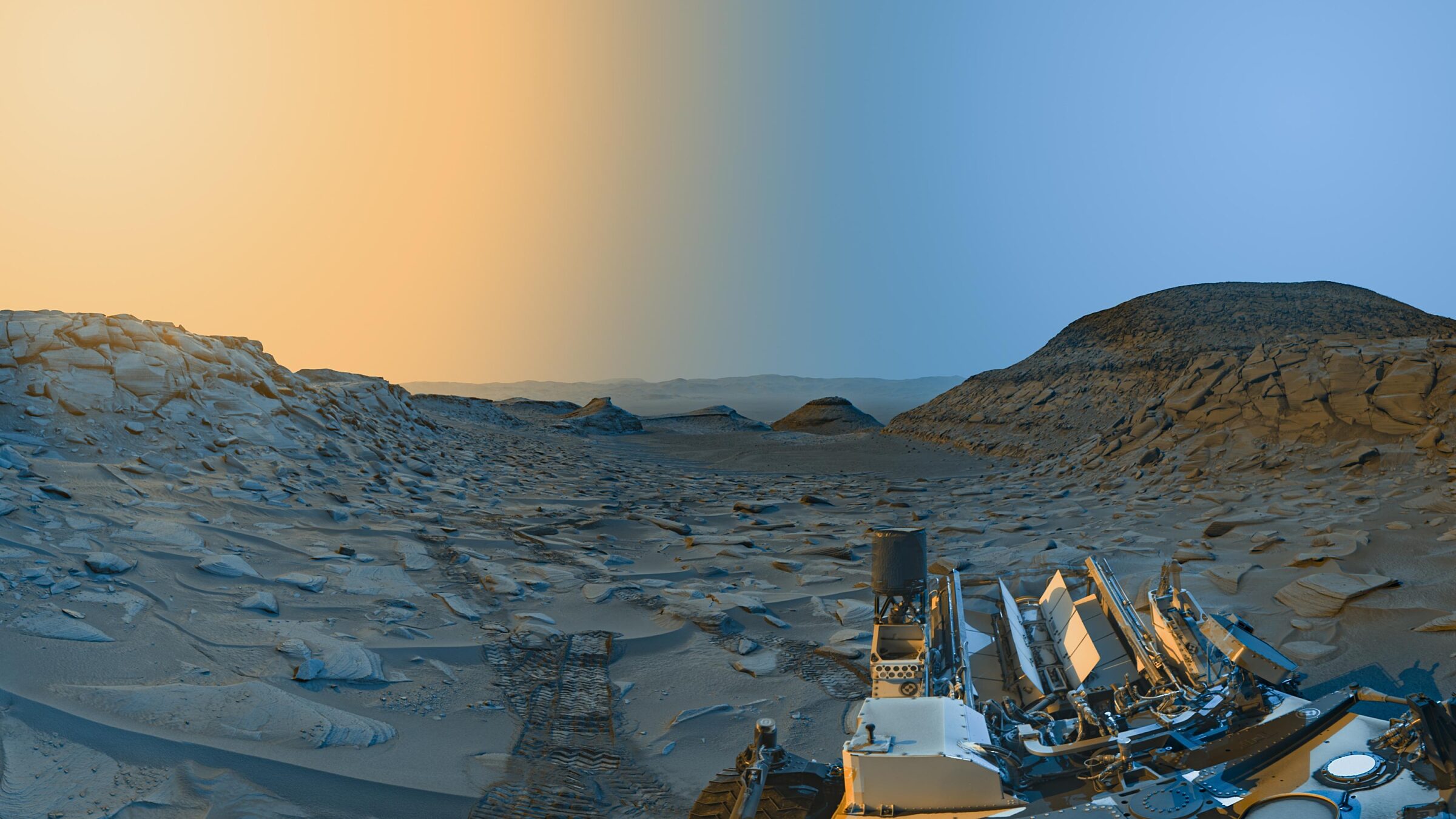
THE BEST PLANETARY SOCIETY ACCOMPLISHMENT THANKS TO THE SUPPORT OF OUR MEMBERS
The Planetary Society coordinated a series of advocacy actions throughout the year to get funding for the VERITAS mission to Venus, the Mars Sample Return program, and the NEO Surveyor asteroid-hunting space telescope.
The great North American eclipse is just weeks away. Are you ready?
Here are some tips for enjoying the April 8, 2024 total eclipse experience whether or not you’re in the path of totality.
- Watch the eclipse with us. If you live in North America, use the map we made with The Eclipse Company to find the exact timing of the eclipse in your location, see how much of the Sun will be covered, and get an idea of the phenomena you might witness at your location. If you’re elsewhere, you can watch a live stream of our Eclipse-O-Rama 2024 event, hosted by YouTuber Everyday Astronaut and our CEO, Bill Nye.
- Make sure you’re prepared for safe viewing! If you don’t already have eclipse safety glasses, you can buy a Planetary Society-approved pair. Go to planetary.org/eclipse to find the link to our partner’s online store and order yours today!
- Check out all our latest eclipse content:
A GUIDE TO SHARING ECLIPSES WITH KIDS
TIPS ON HOSTING AN ECLIPSE PARTY
HOW SONIFICATION TECHNIQUES CAN ALLOW YOU TO HEAR A SOLAR ECLIPSE - If you have kids and will be in the United States, check out our partnership with the National Park Service’s Junior Ranger program. Kids can complete an activity worksheet to earn a very cool eclipse explorer badge.
- Take our free online course that’s all about eclipses. Learn everything you need to know to truly appreciate and share the wonder of solar and lunar eclipses.
All of these great resources can be found at planetary.org/eclipse.
ECLIPSE GLOSSARY
ANNULUS
The ring of light that is seen around the Moon during an annular solar eclipse.
CORONA
The outermost layer of the Sun’s atmosphere, which is visible during a total solar eclipse as a halo of faint light.
PROMINENCE
Gaseous eruptions or loops of plasma that can be seen along the edges of the Sun during a total solar eclipse.
RING OF FIRE
Another term for annulus.
SYZYGY
The technical term for when three objects in space (like the Sun, Earth, and the Moon) line up. (Pronunciation of this term is tricky. It sounds like “si-zuh-jee.”)
TOTALITY
The period when the Sun is completely obscured by the Moon.
A new Planetary Academy book series
If you know kids who would love to learn more about eclipses, check out “Casting Shadows: Solar and Lunar Eclipses with The Planetary Society,” the first in a new series of kids’ books from The Planetary Society in partnership with Lerner Publishing. The entire series will include 15 Planetary Academy kids’ books on space and science that will be made available to school libraries across the United States.
Your member community
It has been a year since we launched The Planetary Society’s online member community. This is a space where members can learn more about space science and exploration, discuss their passions and interests, share their creative work, and have fun getting to know each other. Since its launch in March 2022, over 9,500 members have joined this virtual community.
The community also includes recurring events like our very popular monthly book club, where members can discuss a space-related book with the author. You can also take part in a weekly trivia contest, share and read scientific papers on space topics, and take online courses. There are so many ways to engage with awesome space content and even more amazing people to connect with. Find it all at community.planetary.org or on the Planetary Society app.
Calendar of events
MARCH 19
March equinox
MARCH 25
Penumbral lunar eclipse (visible throughout all of North America, Mexico, Central America, and South America)
APRIL 8
Total solar eclipse (visible as a partial or total eclipse across North America)
APRIL 22-23
Lyrid meteor shower
MAY 6-7
Eta Aquarid meteor shower
JUNE 20
June solstice
What's up?
Planets to look for in the night sky
By Bruce Betts, Planetary Society Chief Scientist
In the sky
Bright Jupiter is low in the early evening west through April, getting closer to the horizon as days pass. Reddish Mars is near yellowish Saturn in the predawn east in April, after which they get farther apart in the sky while both get higher as weeks pass. Mercury is low in the west soon after sunset in late March. On April 8, there will be a total solar eclipse visible in North America. The path of totality will begin in the Pacific Ocean, making landfall around Mazatlán in Mexico and will then cross Mexico into Texas and move across the U.S. to Canada, eventually reaching Nova Scotia. A partial eclipse can be seen from a much broader area including much of Mexico, the U.S., Canada, and Central America. More information can be found throughout this magazine and at planetary.org/eclipse. For more night sky tips, you can always check out planetary.org/night-sky.

Random space fact
The last total solar eclipse visible in the contiguous United States occurred in 2017, and the next one will occur in 2045.
Trivia contest
Our September equinox contest winner is Maya Wotjan of Klosterneuberg, Austria. Congratulations! The question was: In our Solar System, how many moons are larger than Earth’s Moon? The answer: Four. Ganymede, Titan, Callisto, and Io.
Try to win a copy of the new book “Casting Shadows: Solar and Lunar Eclipses with The Planetary Society” by Bruce Betts and a Planetary Radio T-shirt by answering this question: Besides the United States and Russia, what country has had the most people go to the International Space Station?
Email your answer to [email protected] or mail your answer to The Planetary Report, 60 S. Los Robles Ave., Pasadena, CA 91101. Make sure you include the answer and your name, mailing address, and email address (if you have one). By entering this contest, you are authorizing The Planetary Report to publish your name and hometown. Submissions must be received by June 1, 2024. One entry per person. The winner will be chosen in a random drawing from among all the correct entries received.
Astronomical art
Eclipse from the Moon

In this painting from artist Pat Rawlings, an astronaut peers through binoculars at a solar eclipse taking place on Earth. The scene is illuminated by earthshine, the Sun’s light reflecting off our planet. Spacecraft have witnessed this view on behalf of humanity, capturing images like the one on the cover of this issue. To see it for yourself would be quite another experience. Pat Rawlings is a member of The Planetary Society and the International Association of Astronomical Artists.
Do you want to see your artwork here? We love to feature our members throughout this magazine. Send your original, space-related artwork to [email protected].
The Planetary Report • March Equinox 2024
Help advance space science and exploration! Become a member of The Planetary Society and you'll receive the full PDF and print versions of The Planetary Report.


 Explore Worlds
Explore Worlds Find Life
Find Life Defend Earth
Defend Earth


